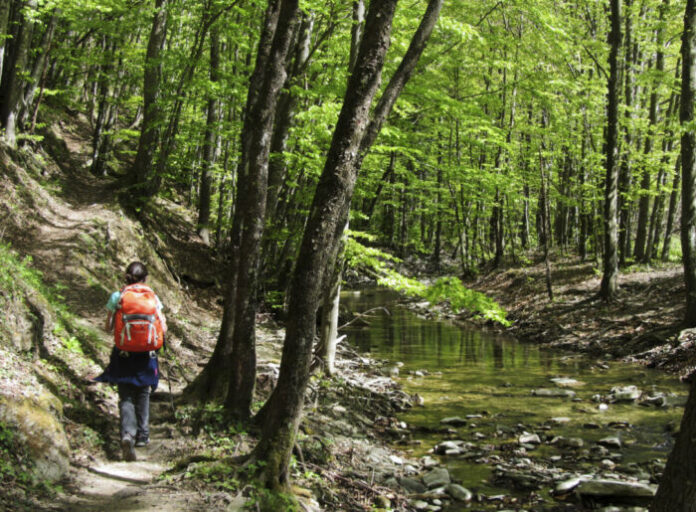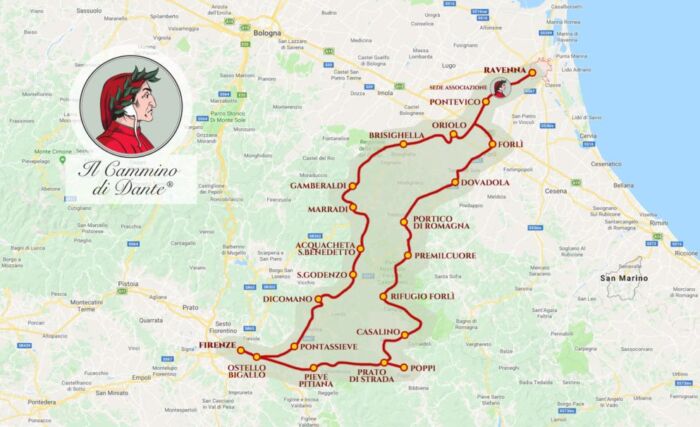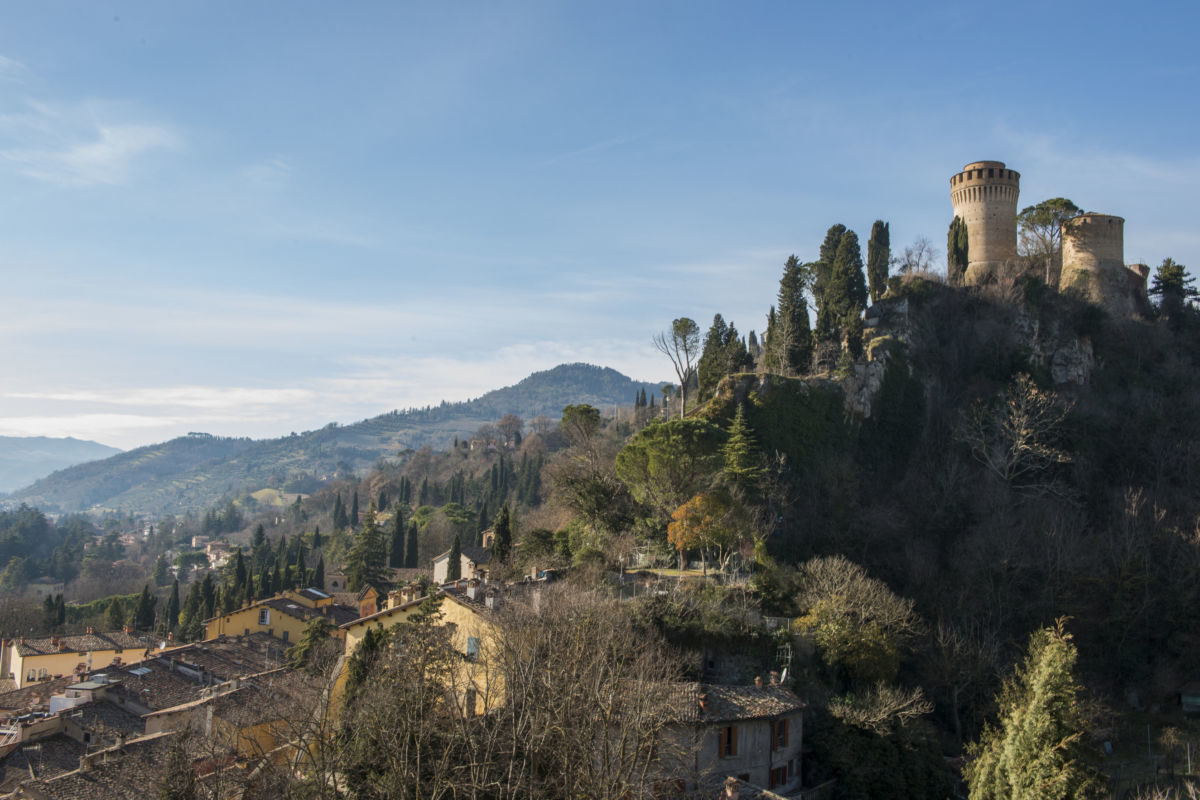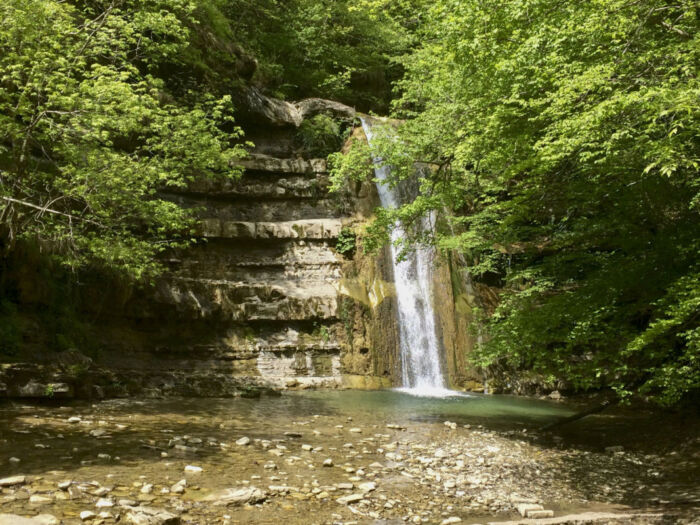
Dante’s Way is a ring route that runs through medieval roads and paths, linked to the life and experience of the poet’s exile, which united Romagna and the Casentino.
It is a naturalistic, cultural and literary journey; quotes and parts of the Divine Comedy are posted along the way. It was designed through the selection of roads that avoid asphalt as much as possible, preferring “ridge” tracks dating back to the late Middle Ages or even to the Etruscan-Roman era. The route consists of 21 stages for a total of about 400 km and the two ends of the ring coincide with Dante’s Tomb in Ravenna and the Casa di Dante Museum in Florence.
Discovering landscapes, fauna and flora, but also castles, springs and hermitages will be a huge thrill for those who undertake the journey; somehow the path allows to enter in close harmony with the atmospheres and places lived by the poet. In fact, much has remained intact of the ancient landscape, so the difficulties and suggestions of the journey approach the journey that the exile Dante had to make centuries ago.
Along the way you can access a series of services and facilities using the “credential” issued by the association together with a map guide, after having paid a registration fee. However, it is necessary to book 2/3 weeks in advance to avoid not finding shelter for the night.
Starting from Dante’s Tomb in Ravenna, the traveler at the hamlet of San Marco, where the headquarters of the Associazione culturale Il Cammino di Dante is located, will be able to collect the guide and credential to take advantage of the discounts and special facilities for the various services disseminated along the way.

Among the stops is the village of Oriolo dei Fichi, a few kilometers from Faenza, where you can visit the beautiful fifteenth-century tower with its small park. Another destination is Brisighella, one of the most beautiful villages in Italy; its origin dates back to the end of the thirteenth century, when the site was chosen to build the most important stronghold of the Lamone Valley. On the hills there are several medieval fortifications and the Sanctuary of the Madonna del Monticino.
A Dante place is the area of the disused church of Gamberaldi; here, at the end of the thirteenth century Maghinardi Pagani da Susinana ruled his fiefdom. Dante quotes him in canto XXVII of Hell to criticize his ambiguous political conduct. Another important center is that of San Benedetto in Alpe, where it will be possible to visit the Hermitage of Gamogna (founded by San Pier Damiani in 1053), the Abbey of San Benedetto and the spectacular 90-meter jump of the Acquacheta river, which is mentioned by Dante in canto XVI of Inferno where it is compared to the Flegetonte waterfall.

Continuing on an ancient medieval road, we will meet the Hermitage of the Toschi and the Church of San Godenzo, where Dante took part in a meeting of Ghibellines and white Guelphs, who went out to seek in vain an agreement with the Ubaldini. After the archaeological area of Frascole, you reach the Etruscan Museum of Dicomano, the village from which Dante left for his escape to Romagna.
Always Dante is Pagnolle di Pontassieve, where the family estate of the Alighieri and Beatrice Portinari were located; probably the two met in the nearby church of San Miniato. Continue to the Dante House Museum in via Santa Margherita sul Lungarno, where the outward journey ends.
The return journey, through numerous olive groves, villages and woods, passes through the Casentino, rich in towers and fortifications, such as the Castello dei Conti Guidi or the Castello di Romena, where the poet lived for a while during his exile .

Continuing you can visit the Hermitage of Camaldoli, founded in 1012 by San Romualdo; the ridge route offers numerous glimpses of a panorama that extends to the sea. Returning to the valley, there is a path that leads to Premilcuore, where you can visit some buildings and the Museum of the Fauna of the Romagna ridge.
After crossing a medieval bridge with its original pavement, the Ponte della Maestà, you reach Portico di Romagna, where Palazzo Portinari is located, which according to tradition was owned by Folco Portinari, Beatrice’s father. In nearby Dovadola the Rocca dei Conti Guidi and other fortifications stand out in the area, together with the Hermitage of Montepaolo, where it was hosted in the thirteenth century by St. Anthony of Padua.
Going up to Castrocaro and Forlì, you return to Pontevico and Ravenna, concluding the itinerary with Dante’s Tomb, the place of departure. The last stop is a ring tour of Ravenna that starts from Ponte Nuovo, passes through Classe and the church of S. Apollinare in Classe and, after reaching the sea up to Lido di Dante, goes back to the starting point.



































